On Oct. 31, 2013, developer Steve Pease was reported missing by an employee of the business he co-owned in downtown Roseville called Sammy’s Rockin’ Island Bar & Grill. He had opened the restaurant on Vernon Street in September 2012 to fanfare from both local residents and elected officials. Rock musician Sammy Hagar, who licenses his name to restaurants, attended the grand opening, during which the street was closed for festivities and the mayor presented him with a key to the city. Thirteen months later, amid news of Pease’s disappearance, a sign was posted on the restaurant’s door notifying patrons of its closure.
A few weeks after Pease last communicated with friends and family, swimmers in the Pacific Ocean in Mendocino County found the body of a man, and serial numbers on hip-replacement implants provided an identification. It was Pease. The Mendocino County Sheriff’s Office later stated he died of undetermined causes.
This was a tragedy. Pease had been a respected member of the Roseville business community. He was also a philanthropist, having masterminded a public art project to raise money for breast cancer research. Beyond the grief, his death left many residents wondering what would happen to Sammy’s Rockin’ Island Bar & Grill — intended to be an anchor of downtown’s rebirth. Pease and his business partner had taken a big risk opening an eatery in a large, two-story building on a street that lacked heavy pedestrian traffic and other attractions. Downtown’s heyday was decades past its prime by the time Sammy’s opened. How big of a blow would the closure be?
(Photo courtesy of City of Roseville)
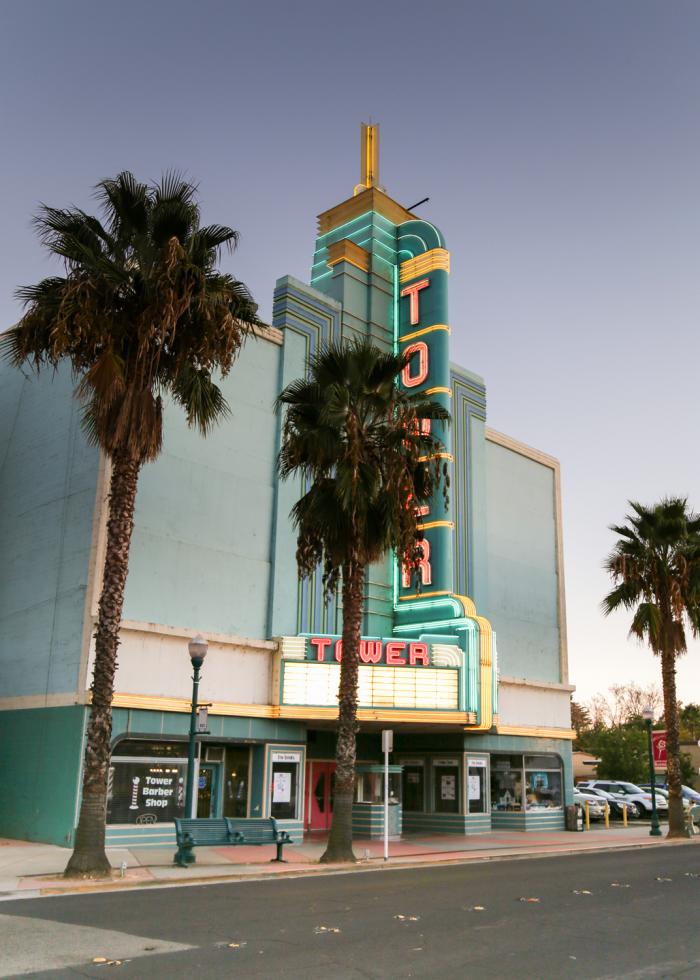
Roseville’s downtown — once the civic core — is now off the beaten path, given how the city has developed over the years, spreading out with subdivisions and new thoroughfares that keep people away from this original urban center. The City of Roseville’s attempts to revitalize downtown have been slow, tedious and costly, and a point of contention among some residents. Others simply don’t care, instead opting to spend their time and dollars in the Westfield Galleria mall or The Fountains outdoor shopping center, both in the newer part of town.
But now downtown’s Vernon Street has two performing arts theaters, an art gallery, a brewery, several restaurants, a coworking space, a Sierra College extension, and a town square where in 2015 some 120,000 people attended 350 events held in and around this public gathering space. A 58-unit affordable housing project is also planned. Within a few years, three pedestrian bridges will connect downtown to Royer Park. Roseville’s revitalization efforts might finally be paying off.
Slow and Steady
In the late 1980s, the city formed the Roseville Redevelopment Agency as the engine to fund improvements throughout downtown and the nearby Old Town. It wasn’t until 2002, however, when a coordinated process began to craft a specific plan for the area. After more than 20 public workshops, the Roseville City Council approved the plan in 2009, which identified 24 potential projects with an overall funding requirement of $164 million.
Sammy Hagar performs at the opening of Sammy’s Rockin’ Island Bar
& Grill in 2012. (Photo courtesy of City of Roseville)
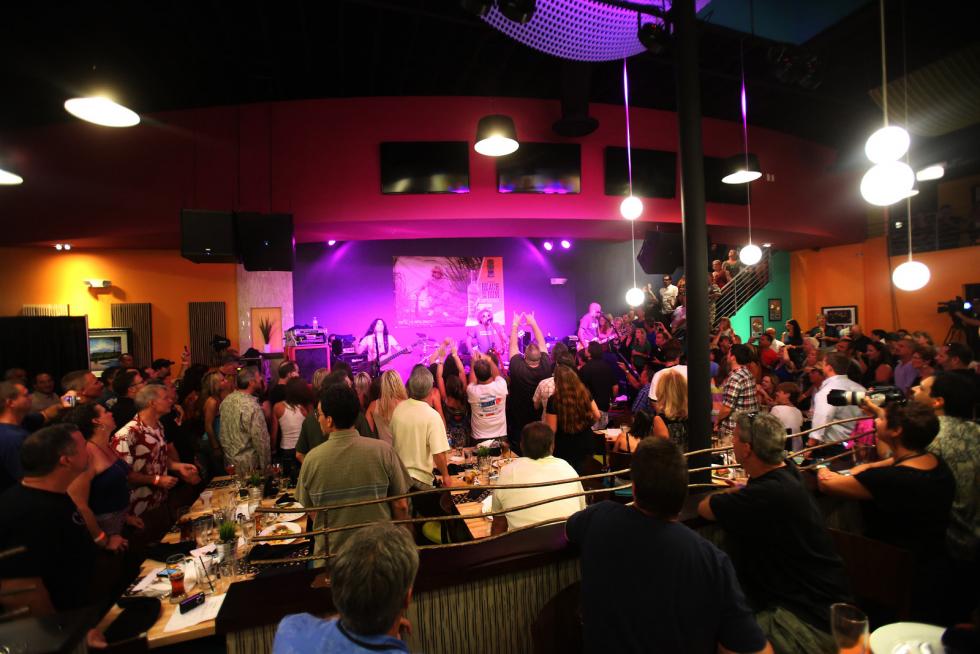
Business owner Scott Alvord served on the steering committee that created the plan (as had Pease). He has been on the board of the Downtown Roseville Merchants for more than a decade, acting as president for nine years until recently stepping down. “It takes a long time but I feel very proud of what our community has put together and the decisions that were made and that we’re listening to the needs,” Alvord says.
Related: Rolling Out the Red Carpet
It’s smart to listen to the community, says Michael Schmandt, the chair of the geography department at Sacramento State who has studied redevelopment for 25 years. “It’s absolutely essential to hear all of the diverse voices and incorporate these things, because you’re trying to make a place where people want to be,” he says. A city’s role is then to set the stage: Create design guidelines, upgrade existing infrastructure, fund civic art, improve the roads. “Infrastructure is a great thing to start with,” Schmandt says.
That’s what Roseville did. The redevelopment agency invested $80 million on streetscaping, facade improvements, small business loans and property acquisitions within downtown between 1999 and 2012, when Gov. Jerry Brown dissolved the state’s redevelopment agencies.
“I remember as a child coming to downtown Roseville to go to the movie theater. This was before the Galleria, before The Fountains, before much was going on on Douglas Boulevard.”Andy Klein, owner, The Monk’s Cellar
“The loss of the redevelopment agency was and is significant to the future of downtown and it took away a huge funding resource we had,” says Development Services Director Kevin Payne, who has worked for the City for 24 years. The specific plan had included the expectation of $102 million in projected housing and non-housing bonds from the redevelopment agency, which would have been generated through a series of five bond sales over a 20-year period.
The Monk’s Cellar, became the tenant of a building owned by the
Roseville Community Development Corporation. (Photo by Joan
Cusick)
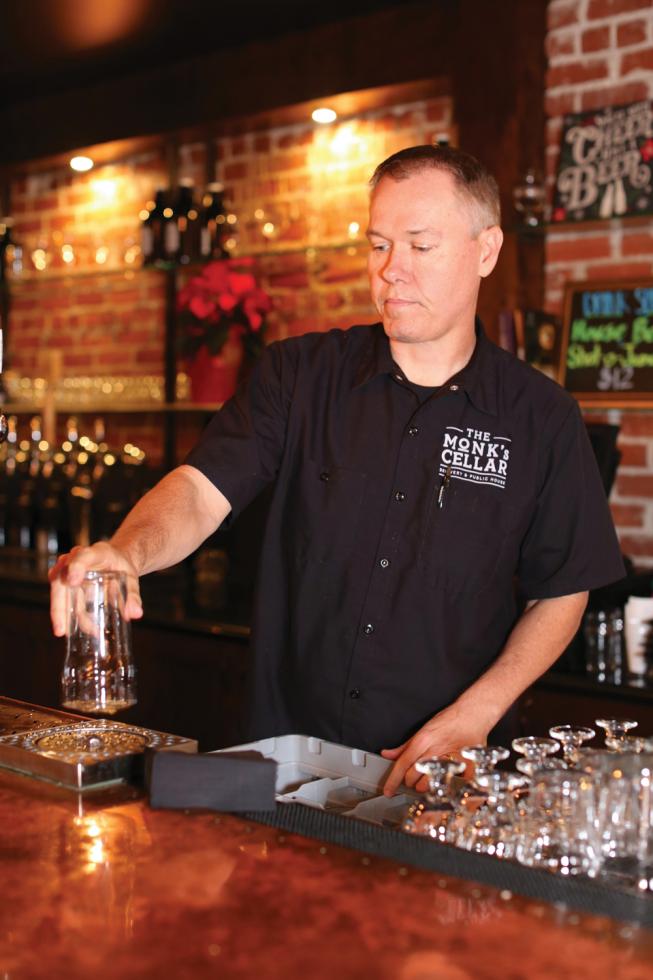
Roseville officials, however, had planned ahead. In 2010, the city council approved the formation of the private, nonprofit Roseville Community Development Corporation and loaned it $5 million with a goal to acquire, renovate and sell properties — and function similarly to a redevelopment agency. “That was a huge, very smart move by the City to set that up,” Alvord says.
Andy Klein got wind of the buzz happening downtown. He wanted to open a brewery and thought, why not Vernon Street? “It was a huge risk,” he says, but in 2014 he opened The Monk’s Cellar. “If I had opened this in Midtown [Sacramento], I wouldn’t have even worried about it.” But he recalled his hometown of a different era: “I remember as a child coming to downtown Roseville to go to the movie theater. This was before the Galleria, before The Fountains, before much was going on on Douglas Boulevard. This was the entertainment hub of Roseville.” Perhaps the area could return to its former glory.
The Monk’s Cellar became the tenant of a building owned by the Roseville Community Development Corporation. Another one of the RCDC’s first actions was to loan $1.5 million to Pease’s company for improvements to get Sammy’s Rockin’ Island Bar & Grill ready to open. (Pease had owned the building since 2008, after buying it for $650,000 from the City’s redevelopment agency, which had purchased it in 2005 for $1 million).
In 2013, when Sammy’s closed, nearby business owners were alarmed, including Klein, who hadn’t yet opened his brewery but who was excited by the possibility of operating nextdoor to a restaurant.
What happened next was a mess. After Pease disappeared and was later found dead, his company defaulted on its loan repayments to the RCDC. The RCDC filed foreclosure documents and ultimately received the property through a trustee sale, and then as property and building owner leased it to Sammy Hagar’s sons. Eventually, in February 2015, this new Sammy’s incarnation closed too. “My first reaction was almost like being punched in the stomach — a little bit of air knocked out,” Klein says.
M. Taylor opened Sparrow 5 in 2012 and sells original art,
antiques and vintage wares, and holds art classes. (Photo by Joan
Cusick)
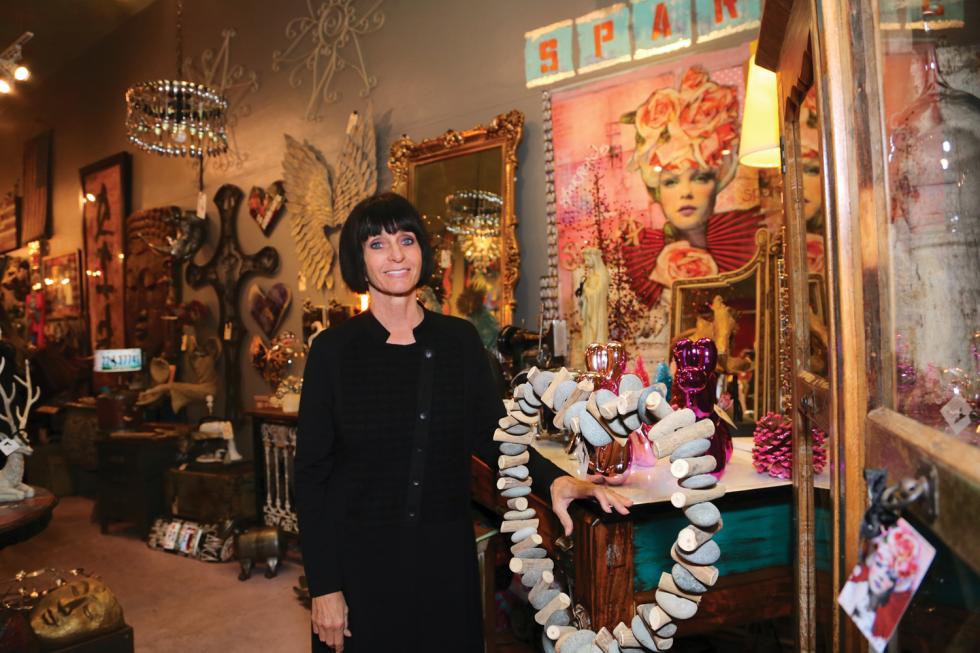
All told, the RCDC has invested $1.5 million in improvements and about $70,000 in payments on a loan attached to the property that was part of the foreclosure sale. “The value of the property as a finished restaurant of this size and quality well exceeds the amount put into the property,” says RCDC Executive Director Chris Robles (who is also the economic development director for the City of Roseville). City officials say they don’t consider Sammy’s a failure because the rehab Pease completed brought the 10,000-square-foot building (formerly an antique shop) up to current building and fire codes, and left behind kitchen equipment that allowed Ninja Sushi and Teriyaki to relocate there in April 2016.
The experiment also taught the city the importance of local ownership — those “mom-and-pop” stores run by people who put their heart and soul into their business, Payne says. “Would we preclude the corporate folks from coming down here? No,” he says. “But this doesn’t necessarily fit their model.”
Related: Warwick Sets its Sights on Downtown Roseville
“Rent was good and affordable and I love the small-town atmosphere.” But the First three years were “really rough.”Angel Ingram,Owner, Threads Clothing Exchange
Among the five properties RCDC now owns is the Odd Fellows building from 1878 in Old Town. The two-story brick building survived several fires that ravaged nearby wood structures. Robles says in the 26 years he’s worked for the City that building has always been shuttered. “Historically, it’s the most significant building in the city,” he says. It may become a restaurant or brewpub, which would help this neighborhood where progress has been achingly slow. Another boost could come with the eventual expansion of Amtrak’s Capitol Corridor passenger service from one to three roundtrips to the Bay Area daily, two of which would dead-end at a station here.
The Block is ‘Taking Off’
As for Vernon Street, “the 200 block is taking off,” Robles says. “We [at the RCDC] don’t really need to be there anymore.” In the last seven years, rents have gone from a low of $.30 a square foot to a current high of $1.99 a square foot. Instead of deterring businesses, higher rents actually attract enterprises more likely to succeed, Robles says. For instance, a new business or property owner will need the know-how and capital to complete what could be an expensive rehab — some of these buildings have more than 50 years of deferred maintenance associated with them because they are old and have sat empty for years.
On this block, a waitress begins setting tables on an October afternoon outside The Place, an Italian restaurant that opened in 2011 and where it’s hard to get reservations on weekend evenings. A few storefronts down, Angel Ingram works behind the counter of Threads Clothing Exchange, which she opened four years prior. “Rent was good and affordable and I love the small-town atmosphere,” she says. The first three years were “really rough,” and she couldn’t even pay herself a wage because all the money went back into the store. Ingram had an uptick in customers in 2016, which she partly attributes to events that bring people downtown. “The street is doing so much better,” Ingram says.
The Place, an Italian restaurant that opened in 2011. (Photo by
Darren Ragle)
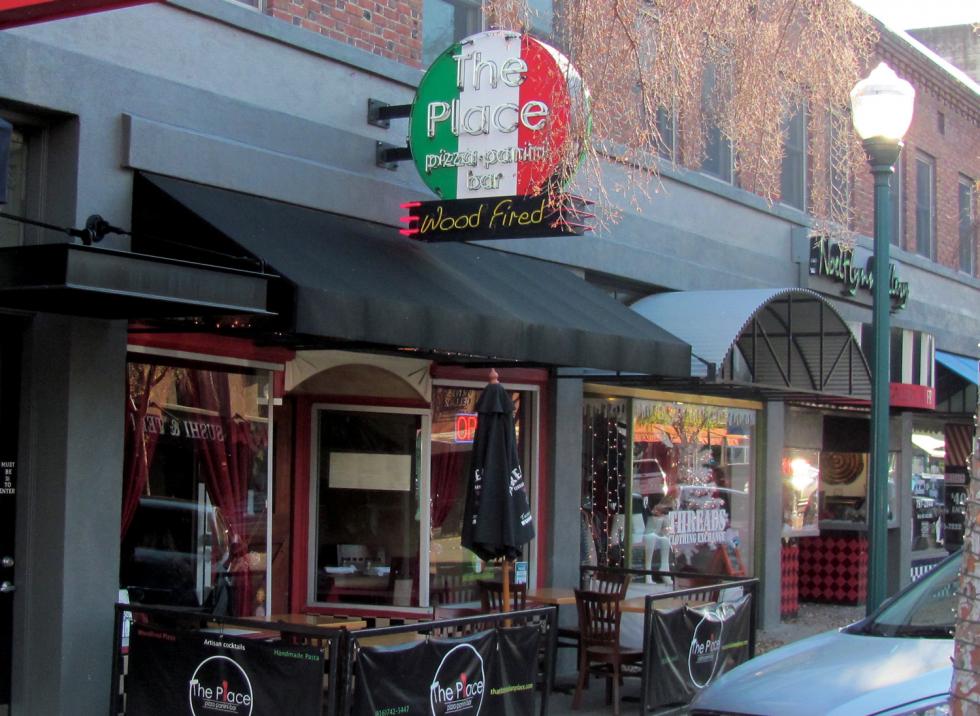
M. Taylor opened Sparrow 5 in 2012 and sells original art, antiques and vintage wares, and holds art classes. Sammy’s closure was “difficult,” she says. So was the financially-motivated cancellation of Downtown Tuesday Nights, a popular street fair that runs May through July owned by the Downtown Roseville Merchants. In recent years, the event struggled to get enough sponsors and not all businesses liked the event or stayed open longer to accommodate the crowds. In 2014, the long-time promoter for the street faire stepped down, and the new organizer scrambled to find vendors. “But they got a huge outcry, so they’re going to do it [again],” Taylor says. Alvord confirms that Downtown Tuesday Nights will return this year.
“It’s cool to be downtown now. People want authentic and a downtown delivers that.”Chris Robles, executive director, Roseville Community Development Corporation
Taylor believes the area is primed for takeoff and is working with the nonprofit Blue Line Arts to develop the creative element. “We have merchants, we have the food, we’re working on getting the art here.” But she says it’s an ongoing education for the larger community. “Half of the people that come in here say they didn’t even know this street was here.”
This resurgence wouldn’t have been possible 20 years ago, Robles says. “It’s cool to be downtown now. People want authentic and a downtown delivers that.”
Greater Sense of Pride
Good redevelopment “evolves out of countless actions over a long time,” says Schmandt, of Sacramento State. Roseville can attest to that. Downtown looks far different now than only five or so years ago, before the two historic theaters reopened and several new restaurants opened, back when foot traffic was scarce and parking almost too easy to find, and before the Vernon Street Town Square was completed in 2013. Revitalizing a defunct neighborhood doesn’t hinge on any one thing, but if it did, that one thing in Roseville would be this outdoor public plaza.
Related: Infographic: Placer County Keeps on Growing
“The place has to be for people,” Schmandt says. “That should be the very first thing redevelopment is thinking of.” The town square is the hub of community events, including a mobile food truck night, farmers markets, wine and beer events, movie nights, concerts and parades. The programming of events “was one of the critical economic strategies that supported the development of the town square,” Payne says. “’Alive after 5′ — that was one of the sayings that came out of the planning process.”
But there’s still work to be done: While people may visit Vernon Street for a special event or dinner at The Place or a show at Roseville Theater, there aren’t a lot of reasons for them to stick around before or after. Directly across from the plaza sits a four-story, 60,000-square-foot building. Developer Joe Mohamed bought the distressed property in 2012 from a bankrupt developer and spent the next few years on the renovation. It remains vacant, although he has tried to find tenants, according to multiple sources. And outside of the 200 block, activity and attractions are lacking.
A Dash of Panache opened in 2005 and was sold in 2016 to a new
owner. (Photo by Darren Ragle)
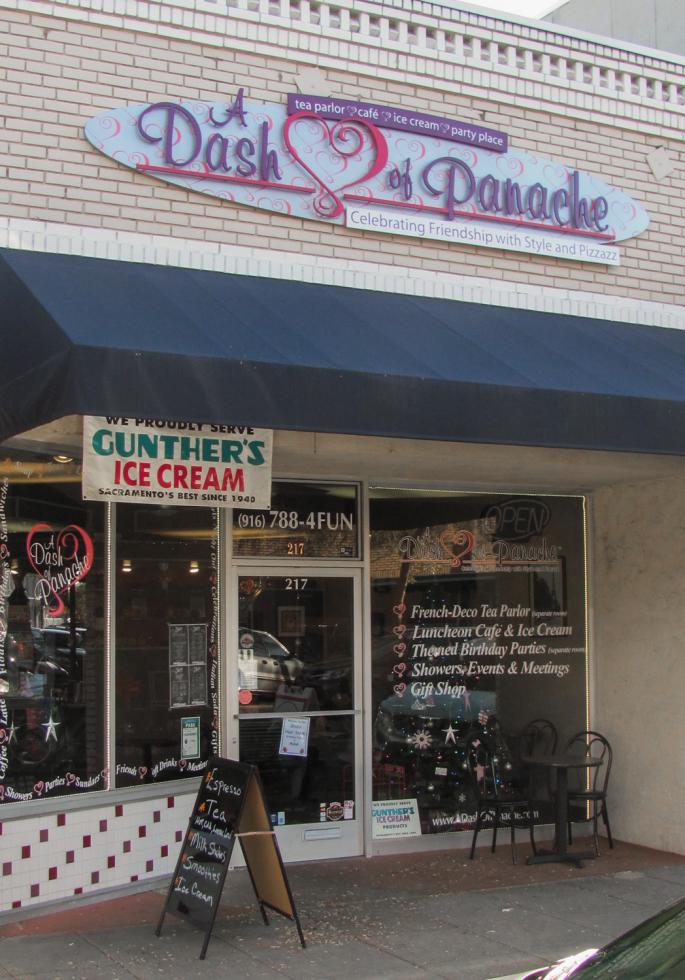
Parking has also been a major complaint among customers, according to several business owners. (The addition of a roundabout has reduced accidents and improved traffic flow). A parking structure currently being built will add to existing spaces in another garage for about 1,000 total.
The extra parking will accommodate the estimated 250 students to attend the new Sierra College extension housed on the second and part of the third floor of a new four-story, 83,000-square-foot building. The college has signed a 10-year lease, which will help the city pay down its debt service on the $26.5 million building. (Many residents were upset when the city demolished a structure from 1935 to make way for this office.) On the ground level will be 7,000 square feet of retail. And in November, the U.K.-based Warwick University announced intentions to purchase the city’s old fire station in downtown to house its graduate school.
There’s also a greater sense of pride and camaraderie now, according to several business owners. Case in point: Downtown property owners recently agreed — with some dissent — to form a property and business improvement district in which they pay a tax to cover extra services such as additional street and sidewalk cleaning, holiday lights and a day porter to assist visitors. The fund amounted to $235,000 in 2015, according to Alvord, who helped start the PBID.
“This [PBID] is a concerted effort to improve the downtown area, improve security, improve the aesthetics and make downtown a place where people want to hang out,” Klein says. He thinks the street would benefit from another bar or two and more boutiques and restaurants (a steakhouse and martini bar are rumored to be coming soon). But he’s invested in The Monk’s Cellar being downtown for the long haul, and exercising his option to buy his building from the RCDC.
“I can’t tell you how many times, probably daily, people come in and remember what Roseville was like,” Klein says. “I get a broad clientele, and we get people in their 90s and they love what we’re doing, and the community has been supportive of us.”



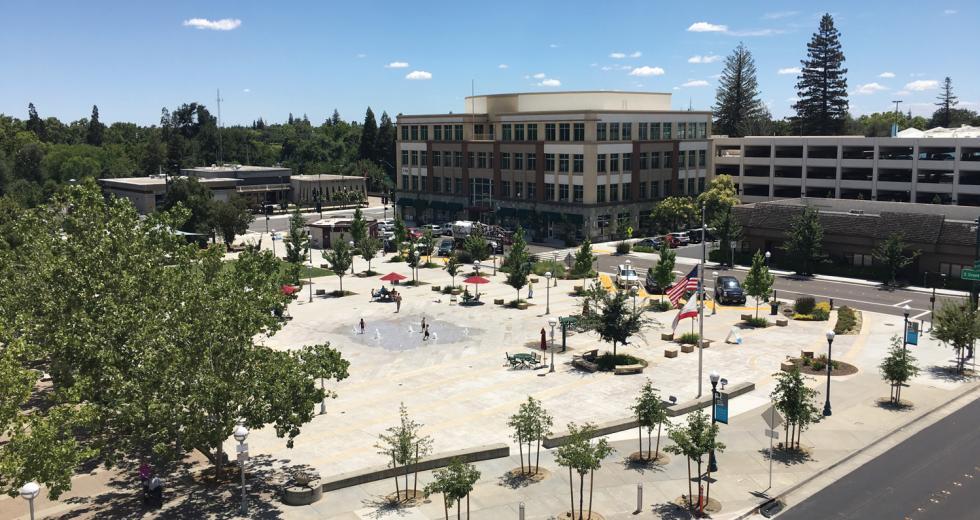
Comments
Great article, so thoroughly explained. Thanks!!
a real movie theatre would bring a lot of people downtown as well as a great shoe store and maybe an icecream store. You have to put places downtown that will bring the people there - these things would - not everyone is into expensive restaurants and drinking .. . . . . .
Love most of the changes. One change, tree plantings were great BUT short sighted. Had the planners moved these to CURB edge, that 3 foot move would have created 20 + parking spaces for Smart vehicles and/or motorcycles/scooters. Too late???????
It's easy to forget about downtown. I love it there, but I live in Crocker Ranch and we never get news of events held downtown. How can we remedy this? I would like to attend and support these efforts.
You forgot about the HUGE, amazing, family-owned music shop (The Strum Shop) bustling with people from the music community ALL DAY LONG!!